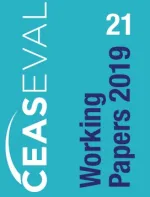National report on the governance of the asylum reception system in Italy

CEASEVAL Working papers No.21
The report provides an overview of the Italian reception system. After describing the initial design of the national governance of asylum seekers’ reception, it focuses on transformations of the reception system since 2011, when the Arab Spring started, paying specific attention to the decision-making process. After examining the formal organisation ofreception policiesin the country, the report explores the actual functioning of the reception system at the national and local levels (in the provinces of Turin and Treviso). Finally, policy outcomes are discussed with particular regard to trends of convergence and divergence in the implementation of reception policies and the contribution of monitoring activities to these processes. The report highlights the complexity of the Italian reception system, despite the repeated attempts of rationalisation and harmonisation. Concerning decision-making, three main periods are identified: 2011-2013, when an emergency approach prevailed; 2014-2016, when key actors of reception were significantly involved in the decision-making and major reforms to expand and improve the system were formulated and implemented; from 2017 to nowadays, when the dialogue among key actors has substantially declined. On paper the openness and the multi-level governance of reception policies appears rather high in Italy. Yet, being dependent on the contingent willingness of the actors involved to cooperate, and given the high concentration of decision power in the hands of the Ministry of Interior, these features may actually be much more limited.
Keywords: asylum seekers, reception, multi-level governance, Italy, decision-making, actors, convergence/divergence